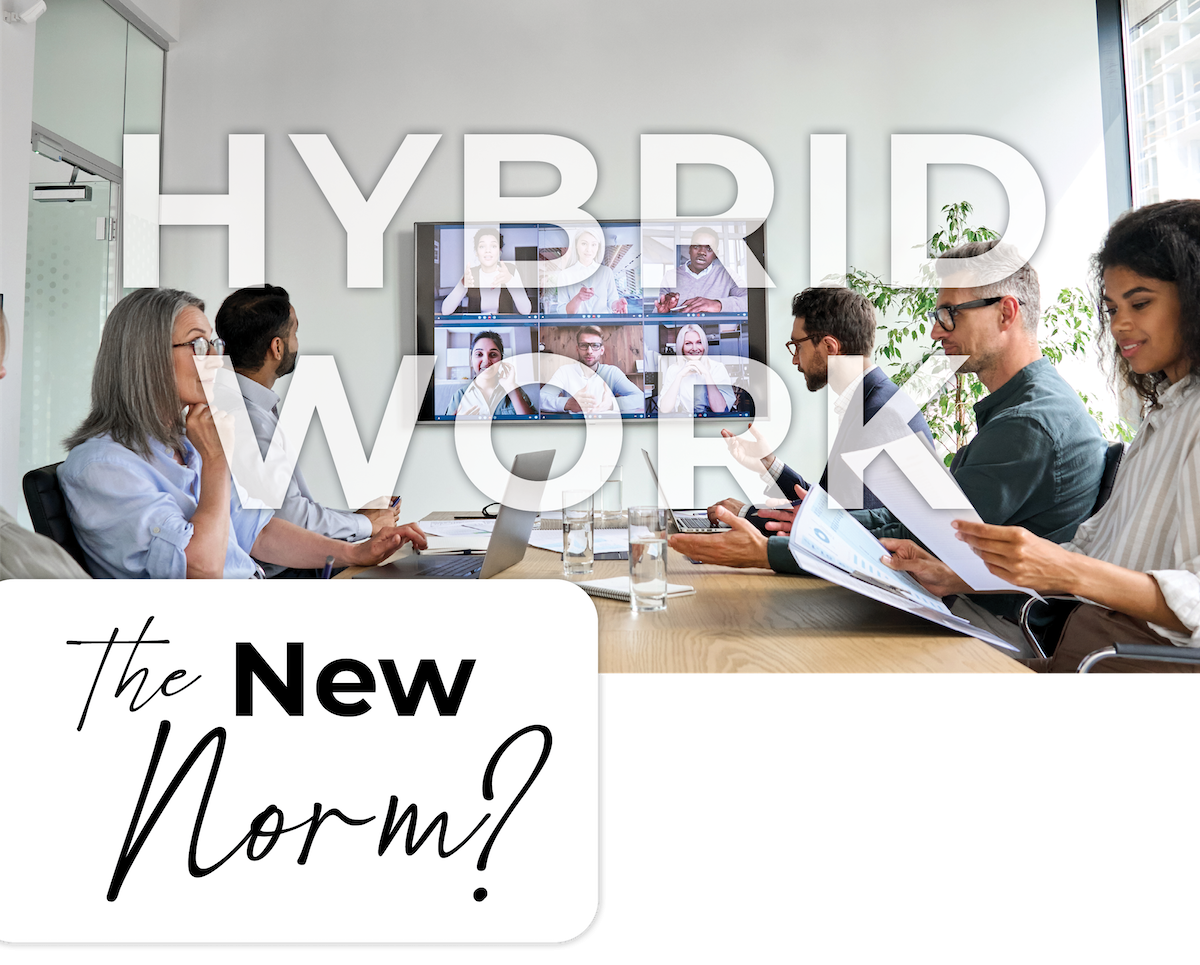
WRITTEN BY KATIE TANSEY
Many SMBs (small & mid-sized businesses), and local employers, are looking to the big multi-national corporations to answer the question - “is hybrid work the new normal?”
We regularly see articles pointing toward the evolving decisions Microsoft, Amazon, Apple, Google or Tesla are taking. Perhaps they are calling their employees back to the office, maybe they have gone fully remote, or perhaps they have seemingly split things down the middle with a hybrid approach. Either way, it may be misguided to take your SMB/local business direction from the popular tech giants.
Let’s consider the decision instead from the perspective of your team/employees and the scope, costs and risks of all three approaches.
YOUR TEAM (EMPLOYEES)
In 2019 the lion’s share of local businesses believed their teams needed to be in the office and most of their teammates/employees likely agreed. However, after the last two years of trial, error, observation and learning, many employees, most notably knowledge workers, have come to a new decision. Love it or hate it, many knowledge workers now require the flexibility of working from home.
As we look at both retention of great talent, and the attraction of new talent, one thing is crystal clear - a flexible work environment is nearly a requirement to attract and retain top talent.
This newly felt requirement is driven by a number of “at home” considerations such as individual productivity, rising gas prices associated with the ‘ol commute, and child care or home school concerns. These concerns seem to have been highlighted by every business magazine for the past nearly two years.
A driving factor often not spoken about is the big multi-national organizations are now more virtual than ever and attracting small town, local business, top talent. They are allowing your, now former, top employee to work from the comfort of home while commanding a salary and benefits historically only available in big city, big corporations, all while the pool of available employees in most sectors has shrunk creating a classic supply v. demand problem to boot (another article, for another day).
It’s now 100% critical for the regional SMB to consider the risk of not embracing a flexible work environment and the cost to replace employees lost to new, virtual, “big business” opportunity if slow to respond!
YOUR BUSINESS STRUCTURE & SYSTEMS
No sooner do we acknowledge the employee risk, and make the decision to pivot our regional SMB to a more flexible virtual environment, we are quickly faced with a very contemporary second order problem.
Business structure and systems, and I don’t mean IT structure & systems, that’s an entirely different article as well. I’m referring to the people structure and systems that allow both the virtual, and on-site teams, to have an undeniably clear view of “what success looks like” and access to the tools required to succeed? Following is a partial list of both.
What success looks like in a hybrid environment:
- Ability to build competence in role(s) virtually and in-house
- Clear Functional Accountabilities for each role in the business
- Clear Behavioral Accountabilities for each role in the business
- Key Process Indicators (KPIs) or an alternative accountability system
- A system to maintain, and further, company culture
- Non-virtual team members incentivized to ensure success of the hybrid environment
Tools required to succeed in a hybrid environment:
- A conscious Organization (people) Design
- Electronic onboarding of virtual workforce
- Boundaries of virtual workforce & work environment clearly identified and managed
- Budget allocation for virtual workforce needs (technical & social)
- Complaint decision-making, consistency and documentation of virtual role go/no go
- Leadership & business system(s)
- Leadership coaching/mentoring and/or training
YOUR CHALLENGES (RISKS)
Pivoting to a virtual or hybrid work environment comes with a host of challenges or problems, the first of which is usually the emotional decision to make the switch. The second is most often the IT considerations to make it thrive. The third is most commonly, and I’m not advocating it should be, changes in policy to combat new employee “problems” popping up.
But the fourth challenge takes a little time to manifest! For those entering their 18-24 month timeline in a new hybrid or virtual environment, you are likely beginning to see weaknesses in both people & process leadership! A pivot to virtual is one of the fastest ways to shine a light on historically mediocre leadership, and culture, hidden by a co-located team. One more pro-tip: mediocre leadership equals lower then optimal productivity, which in turn equals higher operating expense and lower margins.
This 4th challenge may become visible in a number of ways not limited to: a frustrated employee base, frustrated leaders, a change in how it feels to be at work, resignations/turnover, increased errors, late delivery, increasingly dissatisfied internal and external customers and even the feeling of “always being stuck in a meeting.”
YOUR SUCCESS
Your success navigating this new playing field is largely based on your businesses systems and methods to lead successfully through reasonably complex change! If your business has not been faced with this level of “complex” change prior now might be the time to ask for help.
If your business has been faced with complex change prior and has not navigated it well, this is most commonly due to your leaderships strength being based in operating, not changing, your business. This may also be a good time to ask for help while keeping your leaders focused on the day-to-day “normal” challenges of winning in your marketplace.
For the last nearly 10-years HR Resolved, Inc. has been helping lead business just like yours through complex change with its remarkable ability to tailor decades of past startup and Fortune 200 successes into happier, more aligned employees, performing where and how they are needed, driving profit into your business! Visit www.HRresolved.com.
